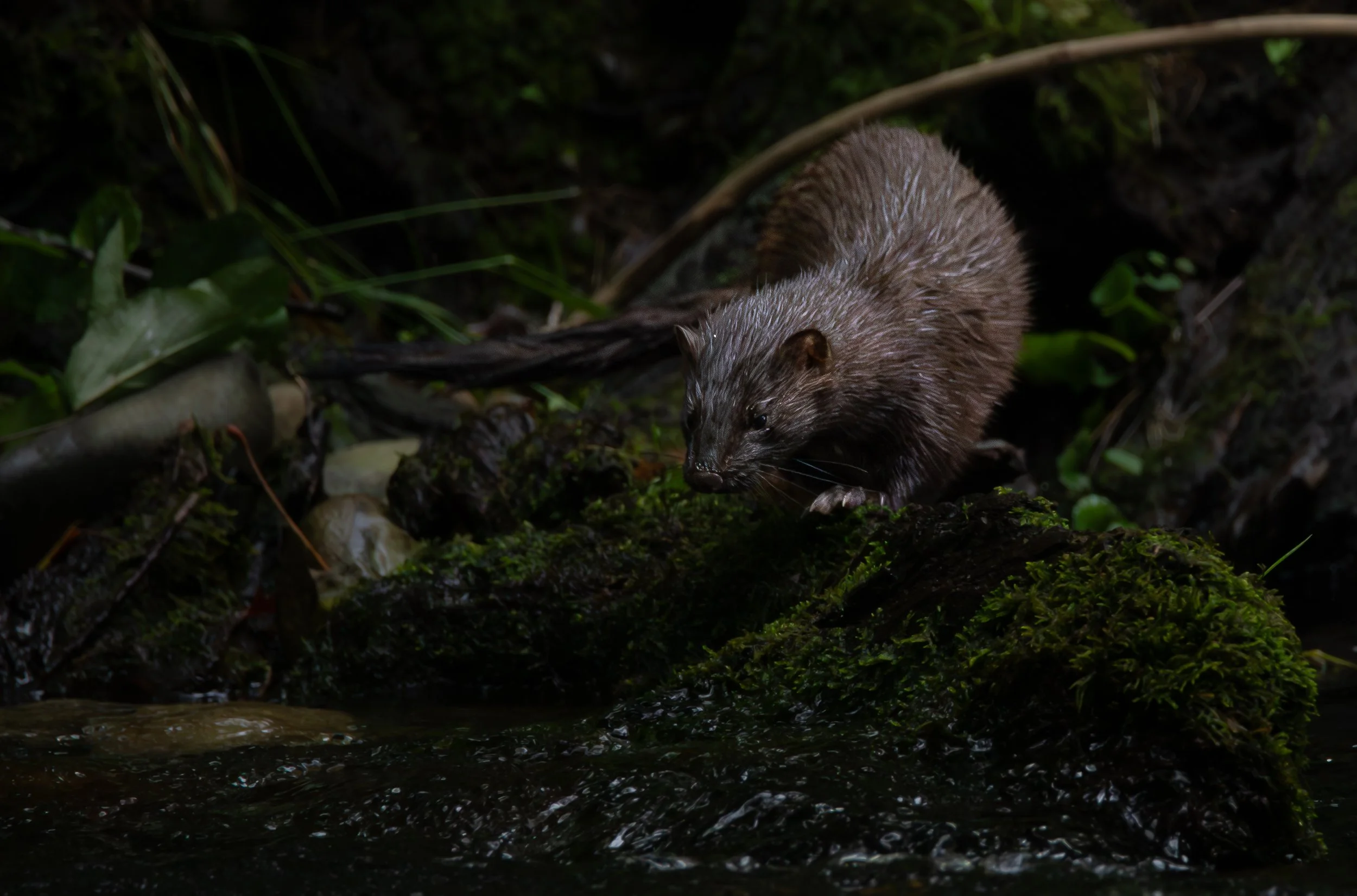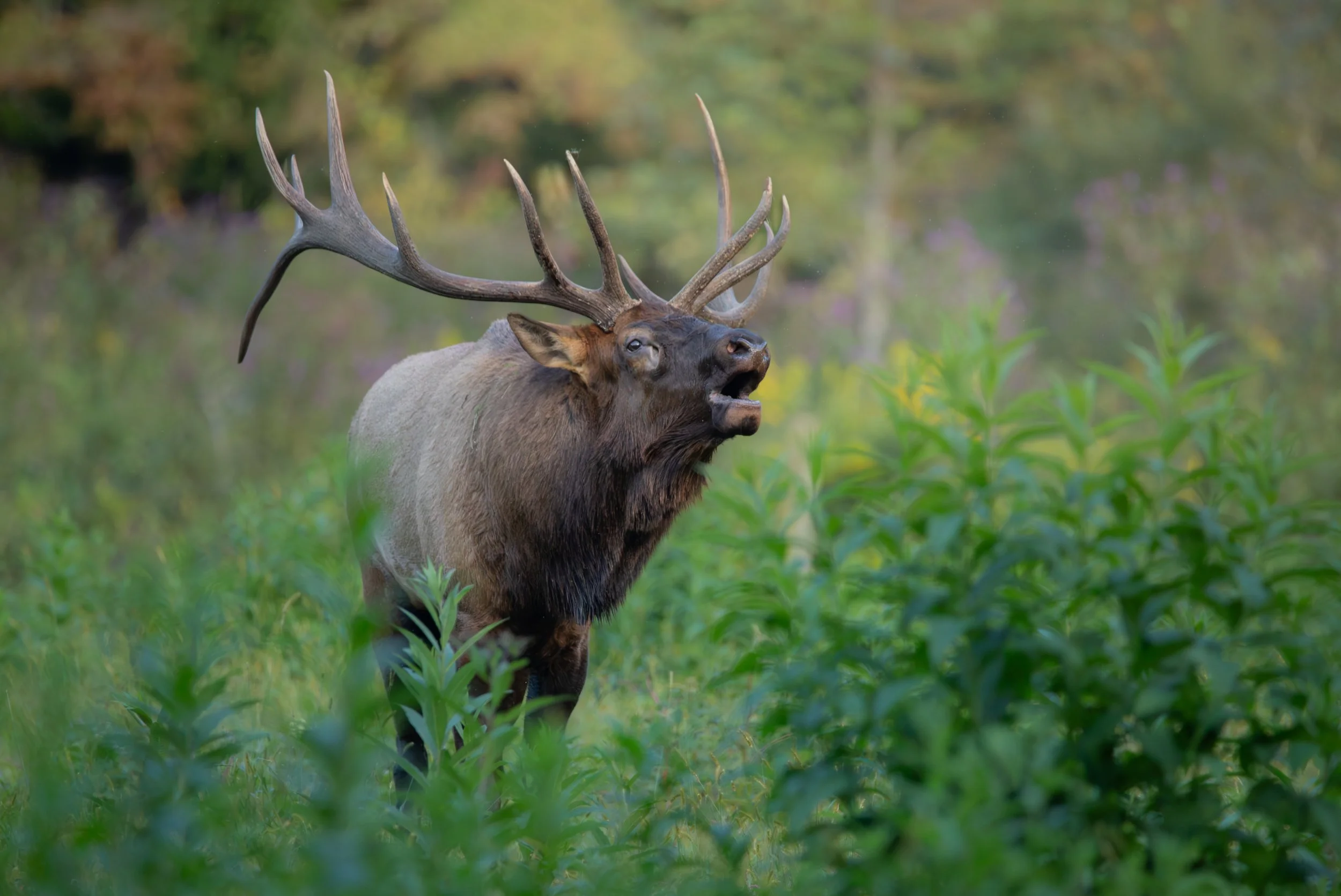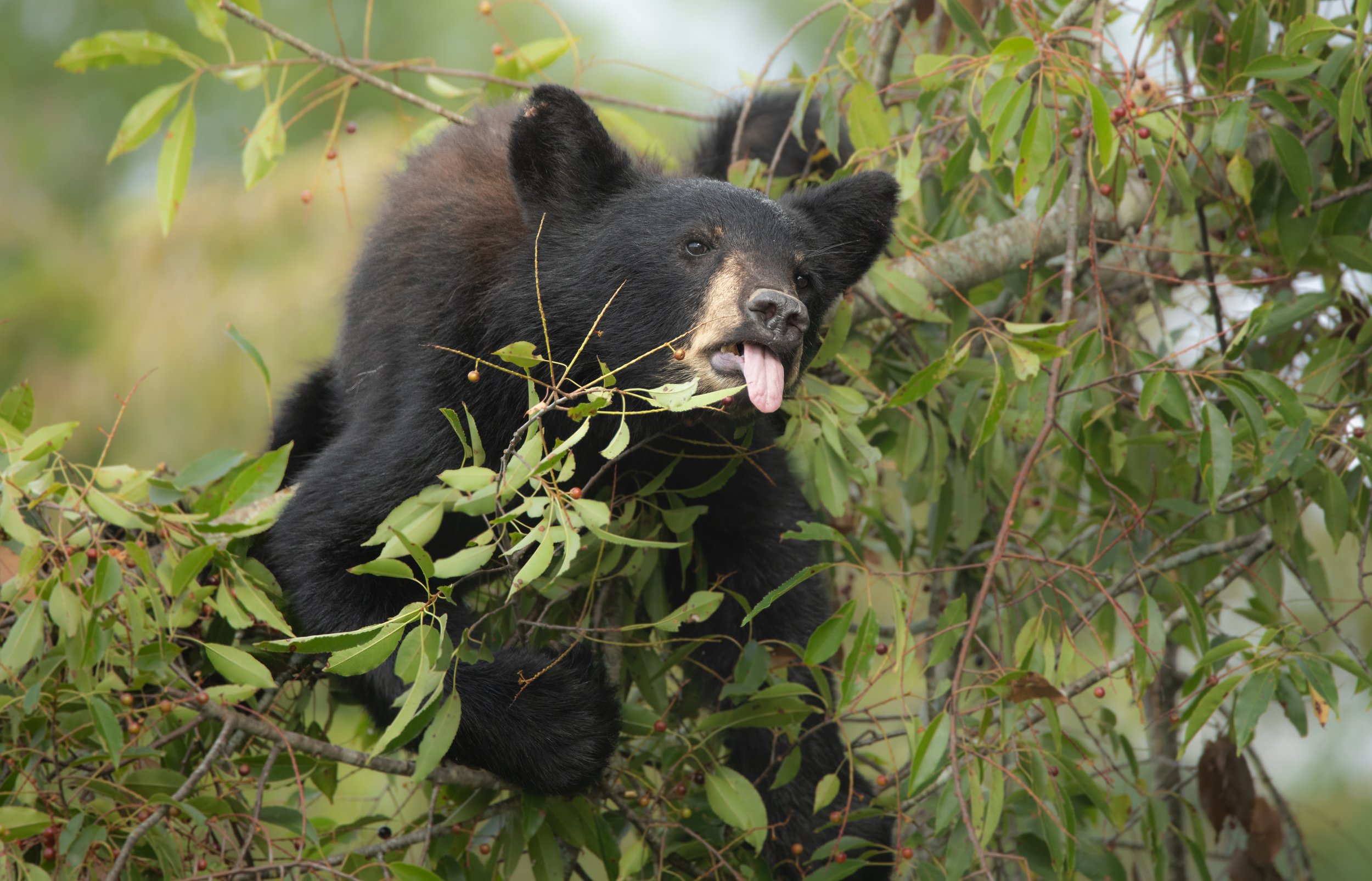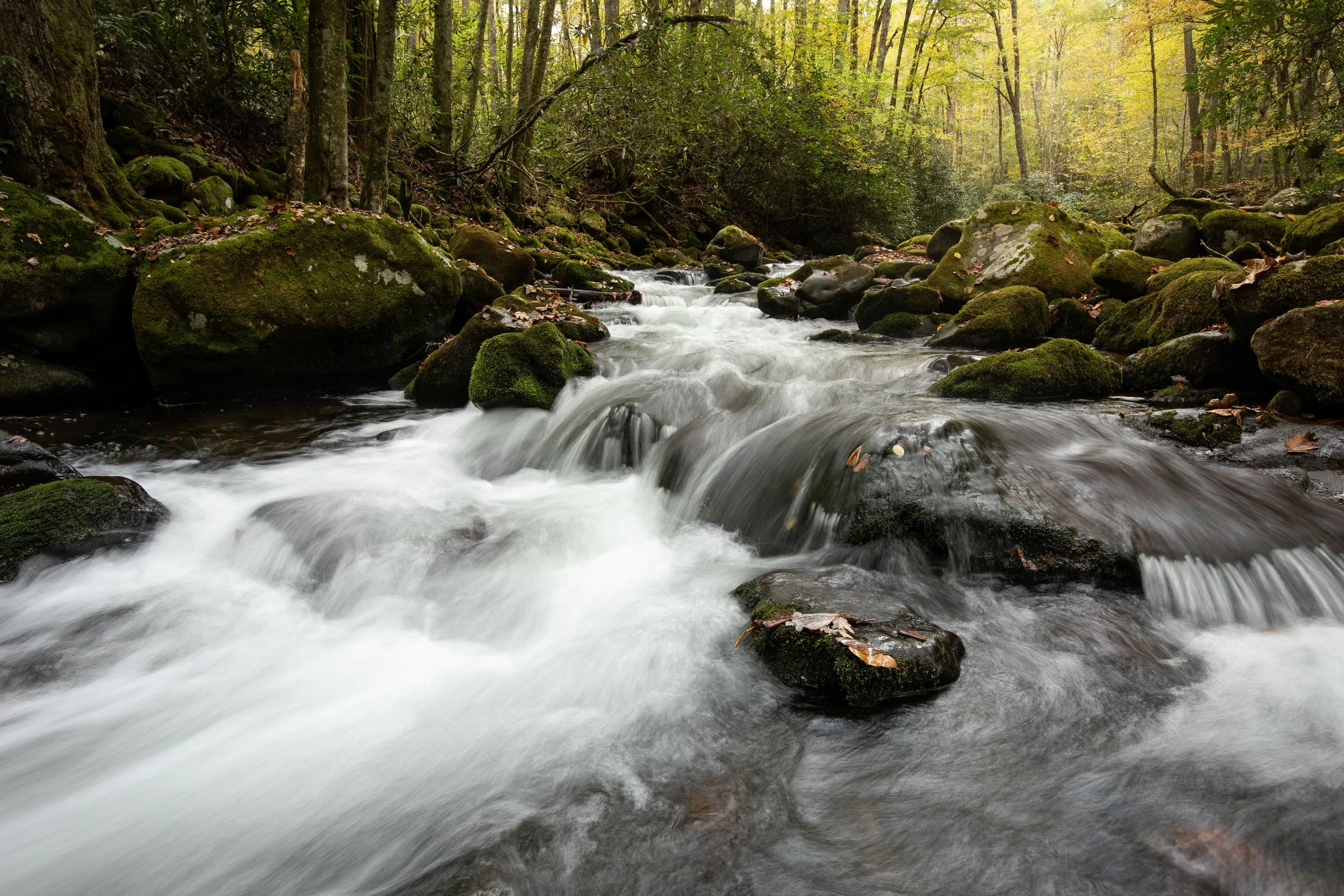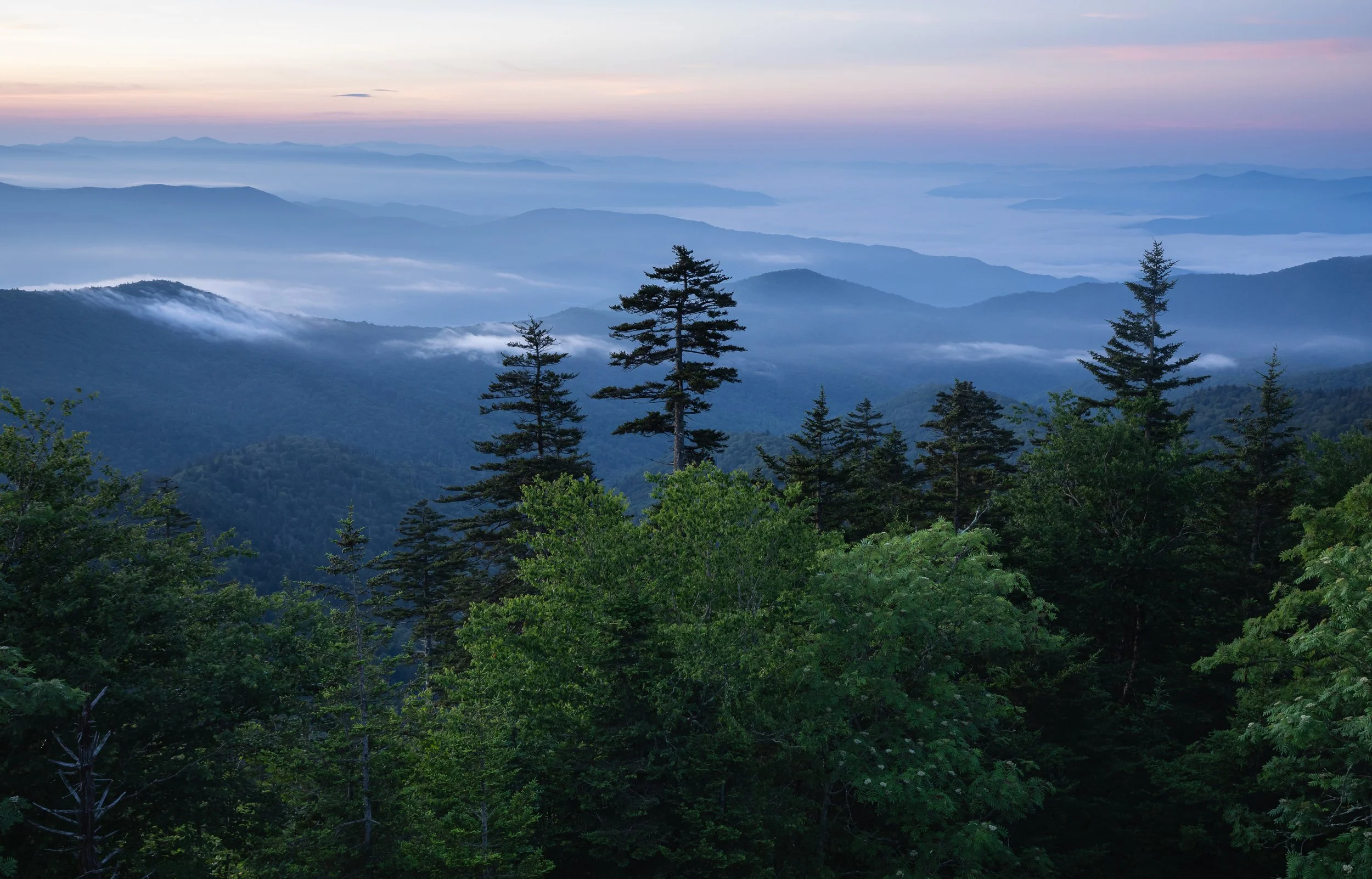
Great Smoky Mountains
“The Smokies always call me home.” - Dolly Parton
Quick Facts
Where: North Carolina and Tennessee
Size: 522,427 acres (800 square miles)
Yearly Visitors: 12 million
Economic Output: $2.9 billion
Image: Sunrise and sunset are some of the most magical times to see the mountains, shrouded in the hazy blue mist that gives them their name.
Biodiversity and history collide in the ancient Appalachian mountains.
Image: A snow-kissed mountain near Kuwohi, the highest peak in the national park, after an unusual snowstorm in October 2024.
Long before the first tree ever took root, the Appalachian mountains reigned. Their formation began 1.1 billion years ago when the continents of Amazonia and Laurentia collided and continued crashing against one another for millions of years. This created a mountain range that was once as high as the Alps, so tall and powerful that they might have plunged the planet into an ice age. From about 480 million years ago to the present, the Appalachians underwent some staggering erosion from rain and weathering. Sediments like sand and clay were swept downstream, forming much of what is now the state of Florida and chipping away at the Smokies’ once jagged summits. Today we can admire the range’s gentle peaks and rolling valleys that bear the weight of this ancient history. The Smokies have also served as a refuge for remnant species leftover from the Pleistocene. During the last ice age, boreal spruce-fir forests dominated much of the Appalachians. As the planet warmed and glaciers melted, these heat-sensitive trees were restricted only to the highest peaks, where they can still be found today. Walking through these forests is like taking a step back in time.
With over one billion years of natural history, it may come as no surprise that the Smokies harbors more biodiversity than any other national park. With an elevation gradient of 876 to 6,643 feet, the park boasts a level of biodiversity equivalent to driving from Georgia to Maine. Nearly 23,000 species of animal, plant, and fungi have been described. Scientists estimate, however, that there are nearly 60,000 waiting to be discovered. One group in particular embodies the diversity and endemism the Smokies accommodates; the salamanders. Over 30 species of these charming amphibians can be found in streams and woodlands at every elevation, giving the park its title of ‘Salamander Capitol of the World.’ It also houses the world’s densest population of black bears with over 1,900 individuals (roughly 2 bears per every square mile). In early summer, synchronous fireflies (Photinus carolinus) perform one of nature’s most unimaginable shows. No matter when you visit the Smokies, life abounds.
Image: An adult Northern slimy salamander (Plethodon glutinosus) moves through leaf litter in search of insects, taken in Smokemont Campground.
Image: A section of the Oconaluftee River along Kephart Prong in autumn.
The path towards becoming a National Park was a rocky one. Unlike the parks out West, which were designated with lands already owned by the federal government, much of the acreage in the Smokies was owned by private citizens or logging corporations. When whisperings of an eastern National Park began in the 1890s, local hard-working supporters in Knoxville (TN) and Asheville (NC) began raising their own funds to purchase the land. State legislatures in Tennessee and North Carolina both appropriated $2 million, with an additional $5 million being raised by locals. A matched $5 million donation from the Laura Spelman Rockefeller Memorial Fund assured that 300,000 acres would be purchased. This makes Great Smoky Mountains National Park one of the first and only to be purchased from private citizens. The Park would be formally dedicated in 1940, a crown jewel of the east coast. Today, it is America’s most visited national park, drawing in over 12 million visitors a year.
Image: The Carter Shields Cabin along the Cades Cove loop road is one of 90 historic structures (including homes, barns, and mills) that can be found within the park.






